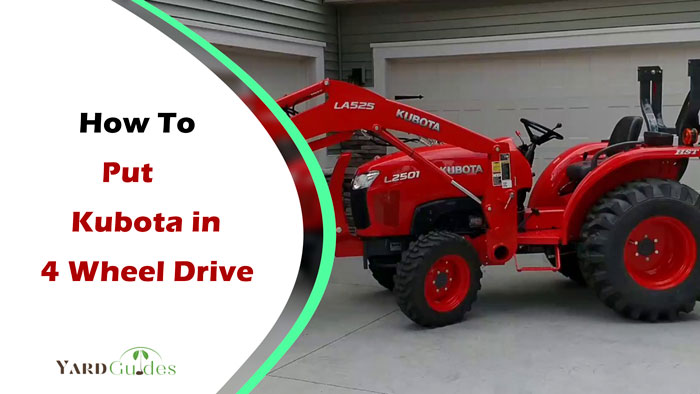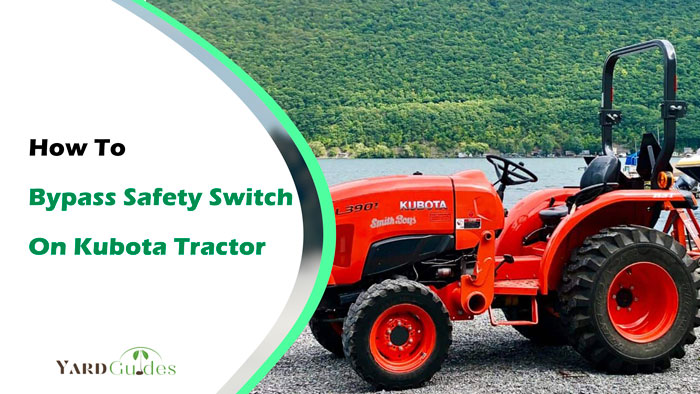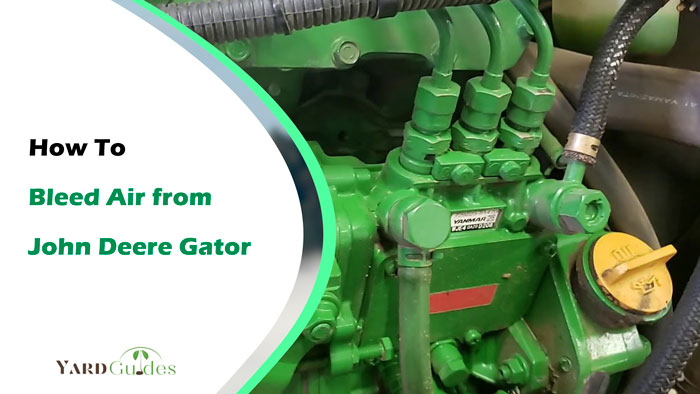Many farmers and agricultural workers face difficulties, such as their Kubota tractors getting stuck in mud or struggling to climb steep hills. The solution is switching your Kubota to 4WD mode so you can tackle rugged terrain.
But, how to put Kubota in 4-wheel drive? To do so, engage the clutch and locate the 4WD lever. This lever is usually found on the tractor’s left side. By the way, before shifting gears, you must come to a complete stop. You don’t want to risk damaging your tractor’s transmission or other components.
Accordingly, you can shift it to 4WD by following a few simple steps if your Kubota tractor is not currently in 4WD mode. We will discuss all in detail in this article.
How To Put Kubota In 4 Wheel Drive?
Shifting to 4WD is a simple process, but it is critical to follow the correct procedure to avoid damaging your tractor. Here are the steps to take:
Step 1: Come To A Complete Halt
It is critical to come to a complete stop before shifting your Kubota tractor into 4WD mode. This ensures that shifting gears is safe and smooth. It also reduces the risk of damage to the transmission or other tractor components.
Step 2: Press The Clutch
You must engage the clutch after coming to a complete stop. The clutch is a tractor component that disconnects the engine from the transmission, allowing you to shift gears without damaging the transmission.
Step 3: Find The 4WD Lever
The location of the 4WD lever on your Kubota tractor may differ depending on the model. In most cases, the lever is located behind your left foot while sitting in the seat. Behind your right foot is the differential lock, which locks both rear wheels together to rotate at the same speed.
This can be useful in situations requiring maximum traction, such as when towing heavy loads or driving on steep or slippery terrain. If one rear wheel is slipping or spinning while the other is stationary or has less traction, the differential lock can help provide more power distribution to both rear wheels and increase traction.
It is critical to remember that the differential lock should only be engaged when necessary and disengaged as soon as it is no longer required. When driving on dry, hard surfaces or making tight turns, engaging the differential lock can cause unnecessary wear and tear on your tractor’s drivetrain and tires.
Here is a diagram to show you where the mentioned parts are located.
Step 4: Move The Lever To The 4WD Position
Once you’ve located the 4WD lever, you can engage in 4WD mode. To engage the gear, move the lever backward and disengage the clutch. You will now be in 4WD mode.
Here is a video that can help you out.
How 4WD Works and Its Benefits on a Kubota Tractor?
4 Wheel Drive (4WD) system on a Kubota tractor distributes power to all four wheels rather than just the two front wheels. This distributes the tractor’s weight more evenly and provides better traction and stability in difficult terrain conditions.
The 4WD system operates by combining mechanical and hydraulic systems. When the 4WD lever or switch is depressed, a transfer case between the front and rear axles directs power to the rear wheels. And that provides the traction needed to keep the tractor moving.
Improved traction is one of the primary advantages or benefits of 4WD on a Kubota tractor. Aside from this, the advantages of 4WD on Kubota tractors include the following.
- The system is intended to reduce wheel slip and improve traction on rugged terrains such as mud, snow, and steep inclines.
- You can maintain better tractor control by engaging 4WD, especially when working with heavy loads or attachments.
- Another advantage of 4WD is increased stability. The 4WD system distributes the weight of the tractor more evenly by providing power to all four wheels,
- It reduces the risk of tipping over on steep inclines or uneven terrain.
- This system assists in keeping the tractor balanced and stable, even in difficult terrain conditions.
- The tractor can work more efficiently by providing better control and traction, reducing the time and fuel required to complete tasks.
- You can work with heavier loads or attachments with improved stability and maneuverability, increasing your productivity.
Safety Considerations When In 4WD
While 4WD can significantly improve traction and stability, it is critical to operate your Kubota tractor safely. Here are some precautions to take:
- When using the 4WD system, always follow the manufacturer’s instructions. The operator’s manual should include specific instructions for safely engaging and disengaging 4WD.
- Inspection of the 4WD system’s components, including the front axle, hubs, and tires, should be performed regularly to keep the 4WD system running smoothly,
- Always drive the tractor on appropriate terrain and avoid situations that increase the risk of a rollover or an accident.
- Also, when the Kubota tractor is in 4WD, it becomes very difficult to make tight turns. So, ensure you use the “BI-SPEED TURN” feature to overcome that challenge.
- Keep an eye out for potential hazards and risks, such as hidden obstacles, steep inclines, or soft soil, which can cause the tractor to lose traction.
- When driving in 4WD, always proceed with caution and avoid sudden acceleration or braking.
- When operating your Kubota tractor, wear appropriate safety equipment such as a seatbelt, helmet, and sturdy work boots. Also, avoid wearing loose clothing or jewelry that could become entangled in the moving parts of the tractor.
Conclusion
Switching a Kubota tractor to 4WD mode is a simple process that can be completed in a few simple steps. Following these steps will ensure that your tractor is ready to tackle rugged terrain and conditions, making it an indispensable tool for farmers and other agricultural workers.
However, always use caution when shifting gears and testing 4WD mode, and if you encounter any problems, seek the assistance of a professional mechanic. Also, always prioritize safety and become familiar with the manufacturer’s instructions and recommendations.



